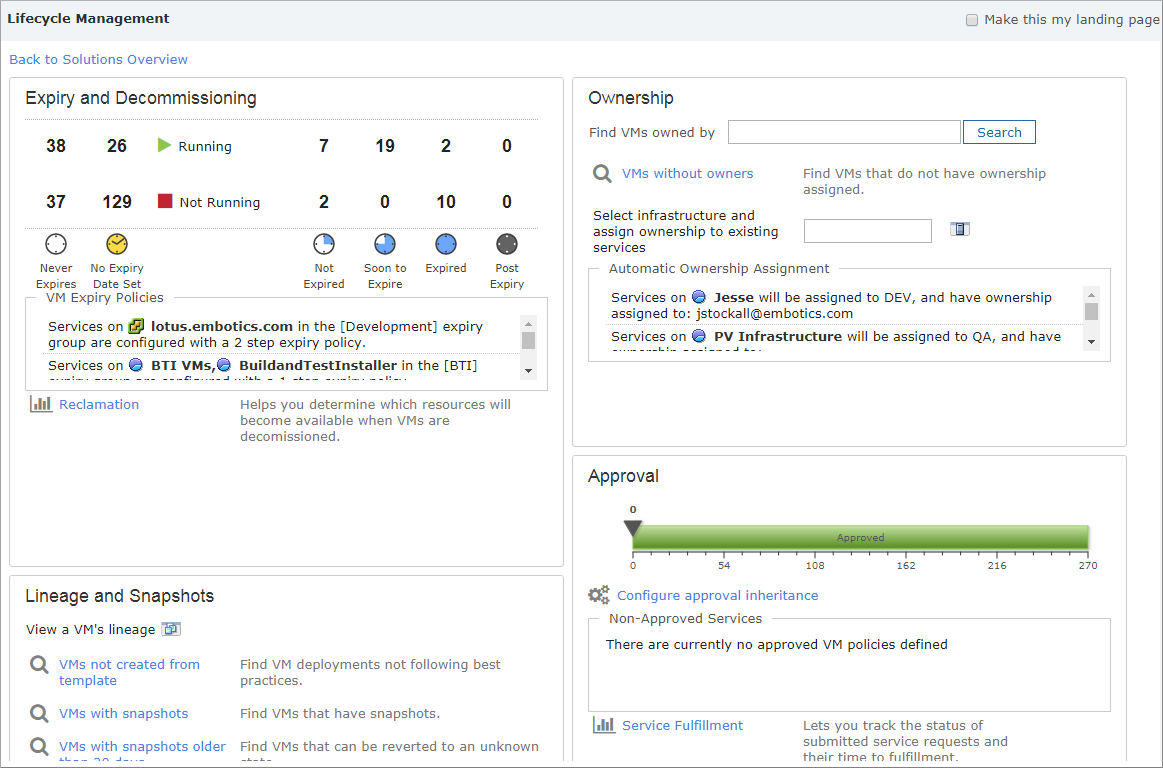With the outdated service ownership model, the same workload is used, re-used and repurposed for months or years. The rental model, by contrast, provides just-in-time provisioning based on standardized workloads. Commander automates the management of the VM lifecycle, ensuring that you're not paying for unused services.
Using a combination of ownership assignment, expiry information and custom metadata, you can automate service lifecycle management. Flexible notification and expiry extension options ensure that users are well informed and able to keep services active for as long as they're needed, without introducing sprawl.
Assigning ownership has several benefits. Remember that organizational ownership, the key multi-tenant concept, enables configuration of quotas for your consumer groups. And because an organization can have one or more managers with permissions to manage an organization's VMs, organizational ownership allows you to delegate administrative tasks.
Custom attributes enable you to assign an unlimited amount of metadata to services and cloud infrastructure. Once assigned, this metadata persists throughout a service's lifecycle, enabling administrators to know exactly what a workload is being used for. You can use custom attributes as filters for Commander's custom searches and built-in reports.
Design considerations
When managing VM and service lifecycle, consider the following:
- Would you benefit from delegating responsibility for VM management to multiple individuals, for example, help desk, IT contact and primary owner?
- Who needs to access a particular service through the Service Portal?
- Who needs to receive email notification about expiry and Commander policy alerts?
- Will you allow users to specify that a service should never expire?
- Will you allow users to extend the lifetime of their services? If so, will you limit the number of times that a user can extend service expiry dates?
- Will you allow Service Portal users to edit custom attribute values?
- Do you need particular custom attribute values to persist to deployed VMs, or are they needed only during the service request process?
- Do you need to archive certain services rather than decommission them immediately?
- Is managerial approval required before decommissioning can occur?
Best practices
- Use a policy to ensure that all services, whether created by Commander or created in the cloud account and managed by Commander, have assigned owners.
- Ensure that all services have an expiry date or are set to never expire. Implement lifecycle management, including the enforcement of expiry dates on request forms and using decommissioning policies for short-lived workloads.
- Automate the decommissioning of expired services based on data retention policies.
Examples
With lifecycle management, you can:
- Configure a policy to assign service ownership at the folder level, to ensure that organizations are charged for all services they're using (if you're a service provider).
- Design your custom attributes so that budget or profit center code information for a VM or an asset number for a cloud infrastructure element can be applied.
- Configure a completion workflow for a decommissioning request to power off and delete a VM.

